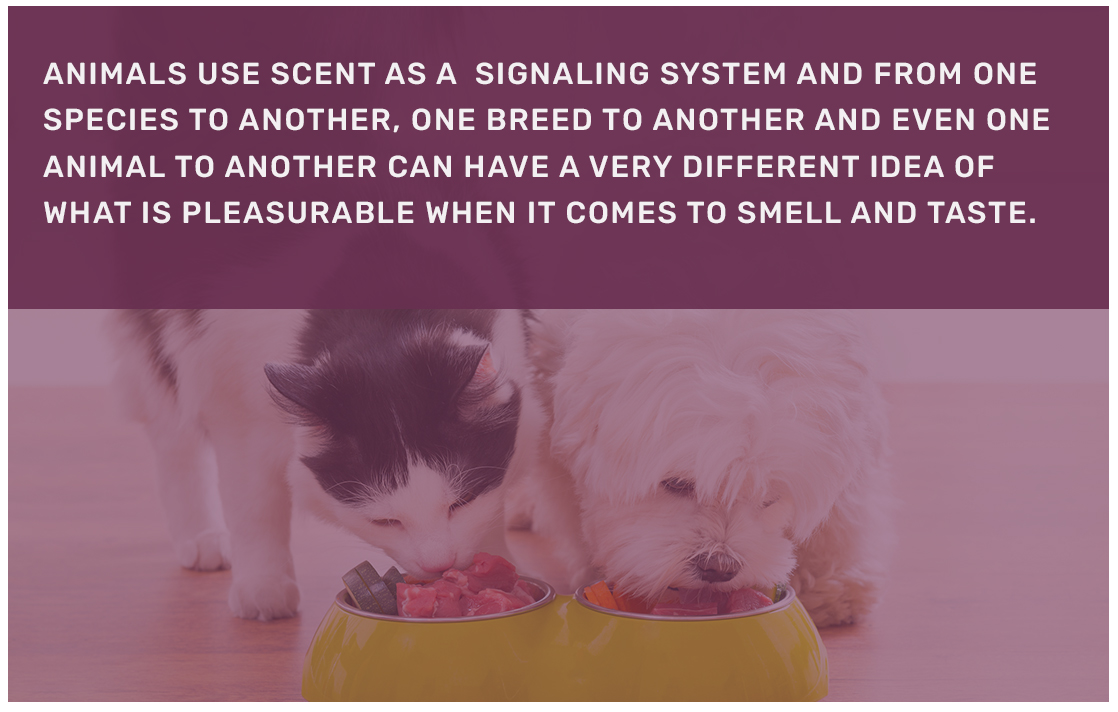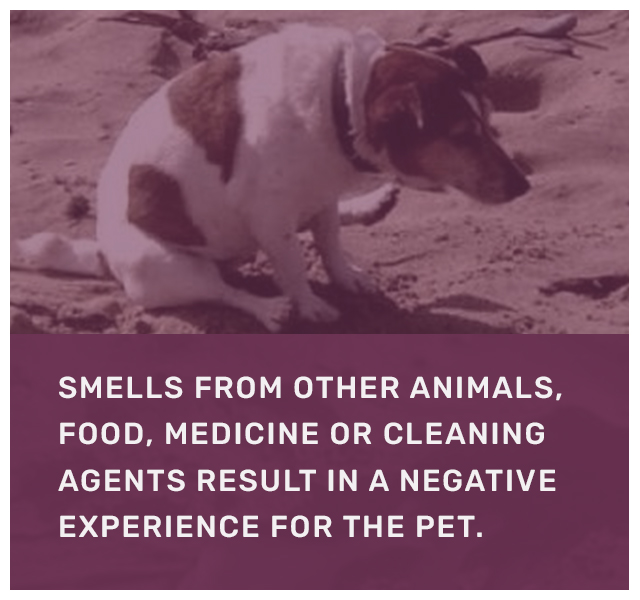Page15

Smell & Taste
Animals have an increased ability to detect smells. Dogs and cats will eat a particular food for the same reason a person would. First, it should have an enticing aroma. Second, the texture or mouth feel needs to be pleasant. And third, it should taste good. These are also ranked in order of importance. If the aroma or texture is off, then taste will not encourage a pet to eat a treat or food. Cats have fewer taste buds than dogs and humans, and limited senses of taste. They do not taste sweet. All of the reasons above are why cats can be very finicky when it comes to this sense and what they perceive to be good or bad.
All animals can differentiate smell and taste at much smaller levels than humans. Animals use scent as a signaling system and from one species to another, one breed to another and even one animal to another can have a very different idea of what is pleasurable when it comes to smell and taste.
Thinking about smell specifically, what are some common scents in your practice?
Anal Sac Secretions
You’re probably more concerned about what you think of the smell than your patient. You’re probably also very desensitized to the smells. Your patients have a keener sense of smell than people do. Smells from other animals, food, medicine or cleaning agents result in a negative experience for the pet.
In particular, with cleaning agents or chemicals, make sure to remove all traces from yourself, the rooms and surfaces the pet may interact with. Chemicals can actually interfere with the pet’s ability to smell, resulting in the inability to appropriately explore their environment.


